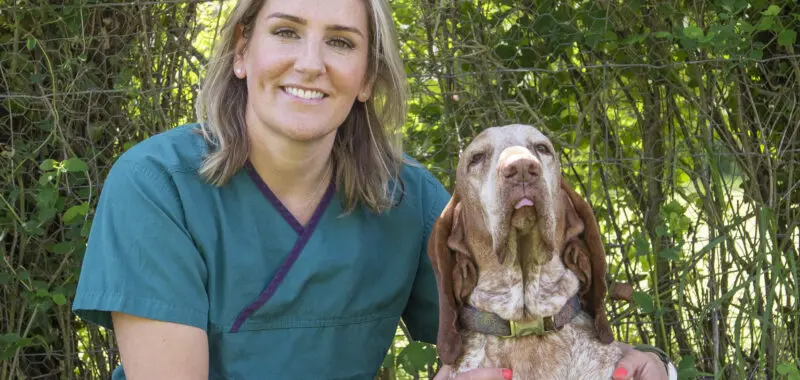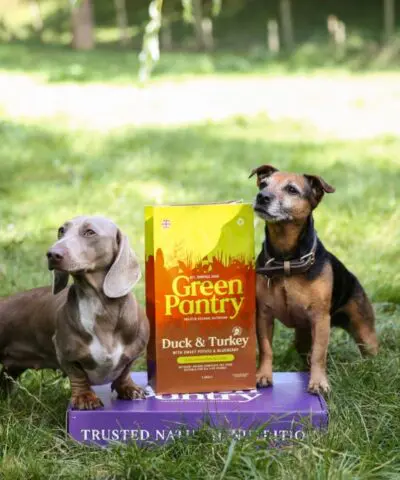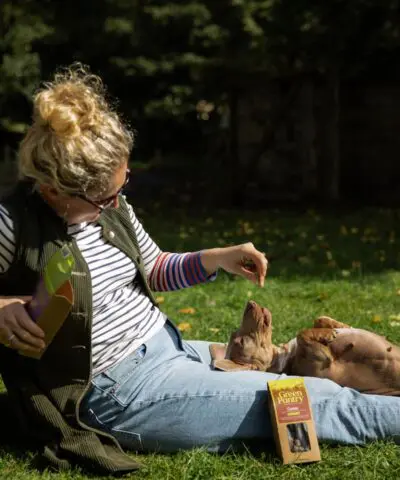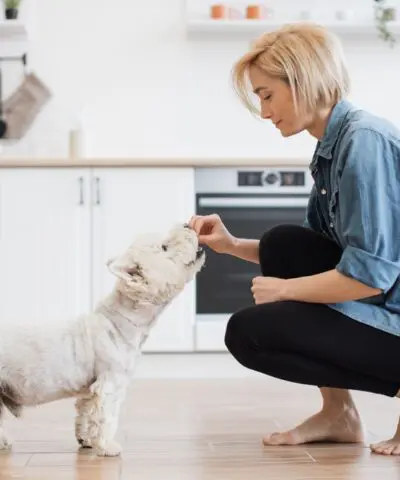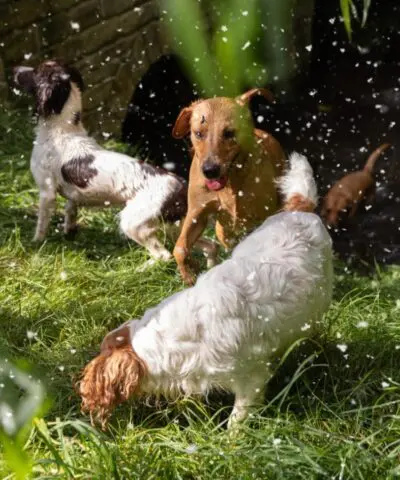We spoke to Rebecca Wilkinson, Veterinary Nurse & Owner of Operation K9, a dog hydrotherapy business with two sites in Beverley and Sherburn in Yorkshire.
Tell us about hydrotherapy
Hydrotherapy is in essence exercise for dogs (although we sometimes see cats too) in warm water. It is designed to help with joint related diseases and injuries as well as broader mobility issues than come as dogs get older such as arthritis.
The warm water is important as it helps to reduce swelling and inflammation and increases muscle relaxation. The buoyancy allows dogs to have more mobility than on land and the resistance increases muscle.
At both of our sites, we have both a pool and a water treadmill which is essentially like a tank on a treadmill belt. Which piece of equipment we use depends on the dog and their condition, and what we need to achieve because dogs use their legs differently on the treadmill than they do in the pool.
The first appointment usually involves a thorough discussion and analysis of the dog’s condition. We do an assessment with examinations, photographs and video. We use a digital pressure plate called a Stance Analyser which measures the percentage of bodyweight going through each leg. We also look holistically at the dog’s food, lifestyle and exercise regime. We have a lot more time than a traditional vet consultation so we can really dig into this more deeply and help support the owner.
We then decide the best course of action which is usually a weekly session for 12 or so weeks. After that the frequency of the sessions may drop although many of our customers continue to bring their dogs as they enjoy it so much and they can see the benefits to their health. We often supplement the hydrotherapy with laser therapy too which can really help with specific problem areas.
We also consider the home environment and what more can be done to help the dog there i.e. rugs on slippy floors, baby gates, ramps.
What do you like most about your job?
I love to see the dogs become happier and more mobile. It has such a positive impact on a dogs overall quality of life, the obvious improvement in health and mobility but also their mood and demeanour. The owners are really appreciative that they came, and really get on board with our treatment plan as we work together to help the dog.
How/Why did you get into it?
I am a veterinary nurse and so have always been caring for pets in some way.
My husband had a bad injury whilst he was in the army and had a lot of hydrotherapy himself as part of his rehabilitation.
We then got a puppy who happened to break her leg which needed surgery. After the surgery we were advised that hydrotherapy would really help but could not find any local to where we were.
We decided to pull our experience together and set up our business which was almost 10 years ago now! And our dog Tweed is still going strong.
How does mobility and joint pain/disease affect dogs overall? How do people spot this?
Dogs are incredibly stoic and have adapted to hide discomfort. It can actually be really hard to spot pain in an animal. People assume that unless they are visibly limping or whining then they are ok.
But actually there are lots of other signs to be aware of such, like struggling to get up after being laid down, appetite and behaviour changes, becoming more clingy or less interested in activities. There are also lots more subtle signs such as posture and coat changes.
Top 5 tips for pet owners to help with mobility?
- Educate yourself and be aware of how to spot the less obvious signs of your dog being in pain. Take regular photos and videos of your dog too so you can see over time whether their posture, gait or muscle mass is changing.
- Talk to your vets to find out what is available. People worry about going to their vet due to cost but vets often do low cost mobility checks or free weight checks with the nurses. Ask them about hydrotherapy as an option. Some vets are more clued up than others on this but we require vet’s consent before we will treat a dog.
- Start considering their joint health proactively from when they are puppies and young dogs. What you do at this age will impact what they will be like as older dogs. For example, many owners love throwing balls for dogs to chase in the park or on a beach and we see this lots amongst dogs with joint issues. There is a lot of twisting, running, turning and stopping with ball games and this puts pressure on the joints.
- Re-assess everything in winter. This could be as simple as not taking dogs out as much if it is wet or slippery. Many people exercise their dogs less in winter anyway as it is darker and the weather is worse. However, people forget to reassess the amount of food they feed their dog when they are exercising less which can lead to dogs piling on weight over winter.
- Consider other forms of stimulation other than always taking a dog out for a long walk. Enrichment toys or some simple 10 minutes physio-based exercises will be equally enjoyed by your dog as they love to try new things. For many people the dog walk is often part of their own routine so it can be hard to break the habit as their dogs get older and where the longer walks may be more difficult for them.
How does the right food help?
Being fed well from the beginning can make a big difference. Puppies require suitable life-stage food and the right amount of nutrients to grow good quality joints, steadily. People often take their dog off puppy food far too soon and try to budget In the early months.
We are seeing more younger dogs with joint diseases and often this can be traced back to what they were fed and how they were exercised as a puppy.
It is the same with over-feeding. There is a strong connection to a dog’s weight and their mobility and joint health so often losing that excess weight will help address some of the problems.
Joint supplements are also a good option for people who want to be proactive with their dog’s joint health but a lot of them are not that good so do your research first.
Many of the good ingredients for joints and mobility like green lipped muscle, omega fatty acids and glucosamine, etc have been found to help so are increasingly are being used within dog food.
